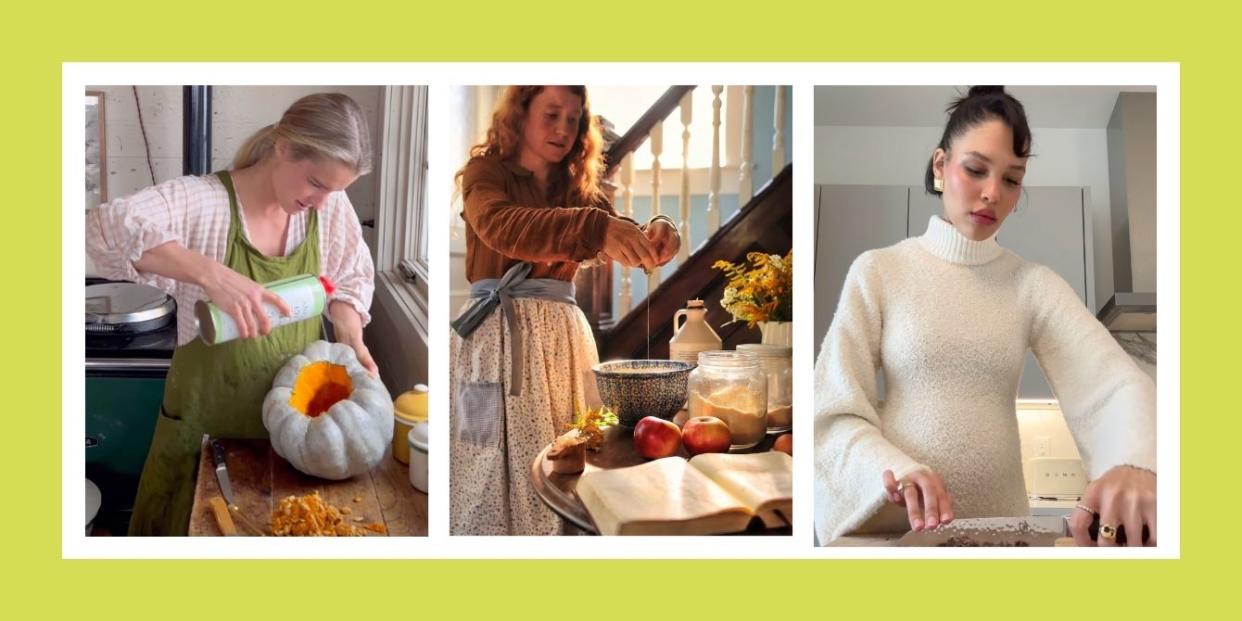What’s a ‘tradwife’ and why are they all over social media?

While scrolling TikTok or Instagram, you’ve probably come across videos from “tradwife” influencers. It seems like they’re everywhere right now—and if you’re wondering what they are and why they’re so popular, you’re not alone.
At first glance, it can be hard to tell what the difference is between a “tradwife”—short for “traditional wife”—and a stay-at-home mom. They tend to post videos showing how they cook, clean, and take care of their kids and homes, which is content that can be super appealing to moms. There’s just one twist: All of it is eerily perfect. And that’s what sets “tradwives” apart, according to experts.
This video, from Caroline Burke, an editor for Katie Couric, explains it well.
“Nearly every definition I’ve found, both from publications and critics… and from the tradwives themselves is that it’s about the role that the trad wife is playing, so submissive, homemaker, traditional gender roles. But that, to me, is missing the most important part of what we’re trying to understand, which is why are they doing it, and why are they choosing to broadcast it online,” Burke explains. “So here’s my definition of a trad wife: It is a type of influencer, by which I mean you cannot be a trad wife if you are not performing it for someone else.”
As an example, she explains that when people think of a “tradwife,” they aren’t actually thinking about homemaking or gender roles—they’re thinking about perfection.
“We’re thinking of the feeling that these curated videos and people evoke,” she says, “which is of a home life that is so unlike the home lives that we know to be true in the real world.”
Some examples of popular “tradwife” influencers include Hannah Neeleman of Ballerina Farm, Kelly Havens, and Nara Smith. Neeleman and Smith face criticism for being privileged beneficiaries of generational wealth with access to resources most mothers in America can’t. Which, one could argue, makes it easier to perform “perfect” labor—because when you have help, you can spend hours making cereal from scratch while filming and editing videos for hours each day.
In an interview with NPR’s Weekend Edition host Ayesha Rascoe, Kathryn Jezer-Morton, a columnist for The Cut, echoed some of the same ideas.
“One thing that stood out to me in some of the videos was that they’re making these very in-depth meals, and that’s great. But I’m always like, well, where are the kids?” Rascoe asked. “Because when I’m just doing anything in my house, and my kids — and a lot of times these women have very young children. My kids are older, and they still are like, every second, they’re like, ‘Mommy, mommy.’ I’m like, how is this even possible?”
Jezer-Morton replied, “That’s a big part of the discourse now is that it’s setting unrealistic expectations. But, you know, something else that is disturbing about it to me is that it’s very ahistorical. It does represent this kind of strange vision of maybe, like, 1950s housewife life that — it was never like that to begin with. And I think it’s worth noting, too, that the women who are doing this kind of performance – they’re all white women. You know, Black women, for example, probably wouldn’t necessarily feel as easy pretending that it was the 1950s.”
So before you fall for the perfectly curated content that ends up on your FYP, keep these things in mind. Influencers make a living by staging a life that literally isn’t real—and “tradwife” influencers are staging a family life that is completely unattainable when you have an average income, kids, pets, and chores to keep up with.

 Yahoo Lifestyle
Yahoo Lifestyle 
